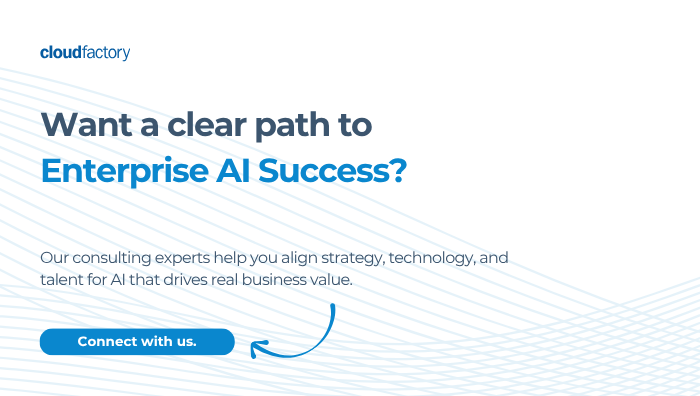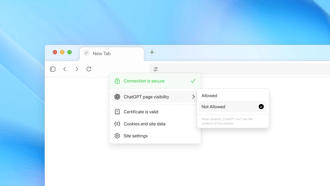Modern AI systems are often optimized to unlock faster, cheaper, and more efficient performance, whether it’s through techniques like quantization, model pruning, or knowledge distillation. These optimizations enable machine learning models to deliver results at scale, reduce compute costs, and overcome hardware constraints. But what if these short-term gains come with hidden, long-term costs?
Enter optimization debt—a concept that has remained largely unexplored amid the buzz around AI optimization. Like technical debt (unresolved issues in code) and data debt (gaps or inaccuracies in datasets), optimization debt refers to the untracked, compounding side effects of optimizations made within AI systems. Over time, these side effects can result in degraded system performance, hidden biases, fairness issues, and even compliance gaps.
By understanding and addressing optimization debt, organizations can build AI systems that are not only efficient but also robust, fair, and future-proof.
What Is Optimization Debt?
Optimization debt arises when AI optimizations create tradeoffs that aren’t properly documented, managed, or revisited over time. These tradeoffs typically fall into areas like accuracy, fairness, or interpretability for the sake of efficiency in speed or cost. While the initial benefits of these optimizations may seem worthwhile, the negative side effects often grow over time in complex and unexpected ways, especially as models are scaled or applied to new contexts.
How Optimization Debt Differs from Other AI Debts
- Technical Debt: Concerns unresolved issues in an AI model’s codebase, such as unrefactored code, quick fixes, or undocumented features.
- Data Debt: Refers to issues stemming from errors, limitations, or outdated elements in datasets, like gaps in training data or unlabeled examples.
- Optimization Debt: Focuses specifically on tradeoffs introduced by efforts to improve model performance or efficiency. These include compromises in AI system calibration, fairness, and interpretability.
While technical and data debts have been thoroughly studied—and are often addressed through robust development tools—optimization debt has largely flown under the radar, creating significant risks as organizations scale their AI systems.
The Hidden Tradeoffs Behind AI Optimization
1. Biases and Calibration Errors
Techniques such as quantization (reducing model precision) and pruning (removing parts of a model deemed less impactful) can lower computational costs, but they can also subtly distort model output and fairness. Quantization may, for example, lead to more severe performance degradation on outlier groups that weren’t part of the calibration set, deepening existing biases.
2. Organizational Blind Spots
Optimization debt is often overlooked at the organizational level because the decisions behind optimizations are rarely versioned or documented. Unlike model revisions or dataset updates, optimizations are seen as a one-time adjustment rather than a variable that needs ongoing governance. This lack of visibility leads to scaling AI systems optimized under outdated benchmarks or assumptions, creating unseen risks as environments and regulatory requirements evolve.
3. Compliance Risks
Emerging AI regulations like the EU AI Act call for greater transparency and explainability in AI systems. If optimization decisions—which could influence fairness, interpretability, and other regulated metrics—aren’t properly documented and auditable, organizations could face compliance gaps. Consider the example of an optimized financial model used in loan approvals. Even if it was calibrated to meet regulatory fairness benchmarks at launch, untracked optimizations might later result in discrimination that’s difficult to trace or explain.
Addressing Optimization Debt
Acknowledging the existence of optimization debt is the first step. Addressing it involves concrete actions that ensure optimizations don’t undermine the long-term goals and integrity of AI systems. Here’s how organizations can get ahead of the curve.
1. Version Optimization Decisions
Treat optimization adjustments as first-class citizens in the AI development lifecycle. Just as organizations track changes in code and datasets, they should also version and document optimization changes. Each optimization should include metadata explaining the tradeoffs made, the rationale behind them, and the metrics that were prioritized.
2. Benchmark for Long-Term Impacts
Optimizations should not be considered “set-and-forget.” Implement benchmarks to regularly test and evaluate the long-term impacts of optimizations, particularly against new datasets, applications, or environments. By measuring downstream effects, organizations can identify whether optimizations are causing drift or introducing risks.
For instance, an image recognition model optimized for speed may experience gradually reduced accuracy as new image styles or formats emerge. Regular benchmarking helps flag such issues before they cause substantial downstream failures.
3. Integrate into AI Governance
Governance frameworks must account for optimization decisions. This means tracking how these decisions impact broader organizational priorities like compliance, fairness, and interpretability. By incorporating optimizations into governance practices, businesses can ensure alignment with regulatory and ethical standards, while also gaining greater visibility into their AI systems.
4. Budget for Debt Repayment
Addressing optimization debt often requires revisiting, revalidating, or even reversing outdated optimizations. This process—while resource-intensive—is essential for maintaining the health and fairness of AI systems over time. Organizations should allocate resources for periodic debt repayment, ensuring that debt doesn’t accumulate unchecked.
The Lifecycle View of AI Optimization
Optimization is not a single event. It’s a continuous, iterative process that comes with responsibilities. AI leaders need to shift their mindset, approaching optimizations as part of an AI system’s lifecycle rather than as isolated decisions. This lifecycle view ensures optimizations remain transparent, traceable, and aligned with both organizational goals and external regulations.
How CloudFactory Can Help
At CloudFactory, we believe in enabling organizations to build AI systems that are not only efficient but also ethical and compliant. Our expertise in data operations, governance, and oversight means we can help organizations adopt best practices for managing optimization debt. From ensuring robust documentation to integrating governance processes, we empower companies to take a forward-thinking approach to AI lifecycle management.
Case Study: Addressing Optimization Debt Through Inference Oversight
One clear example of optimization debt in action is the accumulation of hidden AI errors during inference—often overlooked until they become costly. CloudFactory’s work in this area demonstrates how investing in oversight and validation can prevent these subtle, compounding issues.
In the healthcare sector, CloudFactory partnered with clients to establish technological guardrails alongside human-in-the-loop validation. This approach allowed organizations to detect and correct inference-level errors early, helping them avoid costly compliance failures, including potential violations of HIPAA and GDPR regulations.
Similarly, in manufacturing, robust inference oversight led to an 18% reduction in quality control exceptions by making AI-powered inspection systems more accurate and reliable over time. This drop in exceptions not only reduced operational costs but also highlighted the ROI of comprehensive oversight in mitigating the long-term impact of optimization debt.
These outcomes underscore the true cost of neglecting oversight during optimization—and the significant value organizations can gain by proactively managing optimization debt at every stage of the AI lifecycle. For more on this topic, see The Hidden Cost of AI Errors.
Final Thoughts
AI optimization is often celebrated for its ability to unlock new efficiencies. But optimizations come with tradeoffs, and as these accumulate over time, they can create hidden, compounding costs—optimization debt.
To responsibly scale AI systems, businesses must recognize and address the risks posed by optimization debt. By incorporating practices like versioning, benchmarking, governance integration, and budgeting for debt repayment, organizations can minimize those risks and align their AI systems with both long-term goals and regulatory expectations.
Managing optimization debt isn’t just about ensuring compliance or preventing system failure—it’s about building transparent, trusted, and lasting AI systems. With the right mindset and tools, including those offered by CloudFactory, businesses can lead the way in maintaining responsible AI systems that deliver benefits without compromise.
.png?width=1563&height=1563&name=Untitled%20design%20(38).png)




.png?width=1563&height=1563&name=Untitled%20design%20(30).png)



.png?width=1563&height=1563&name=Untitled%20design%20(33).png)


.png?width=1563&height=1563&name=Untitled%20design%20(34).png)














